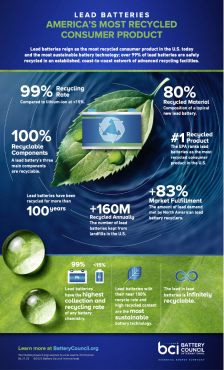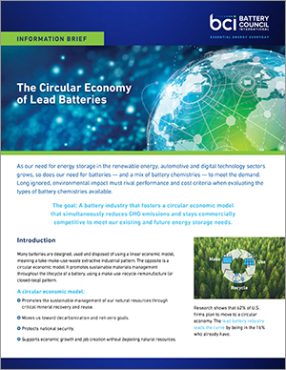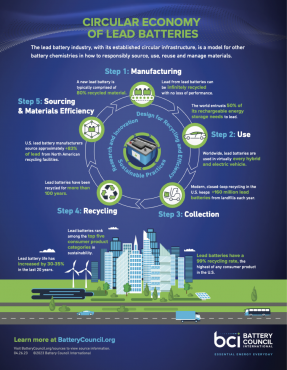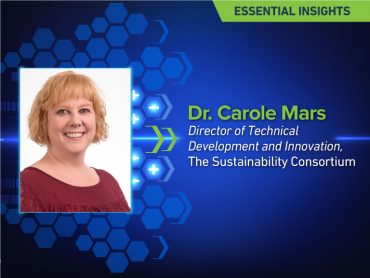
A Resilient Materials Economy Matters
In conjunction with America Recycles Day on Nov. 15, Essential Energy Everyday is again excited to share the sustainability success of the lead battery manufacturing and recycling industry. But this year, COVID-19 has made our recycling story more important than ever.
That’s why Essential Energy Everyday has proudly joined nearly 300 other organizations and companies in signing the EPA’s 2020 America Recycles Pledge. Together, we’re committing to work toward an even more resilient materials economy.
Lead Batteries Have Highest Recycling Rate
Did you know that lead batteries have a 99% recycling rate? According to the EPA, that makes lead batteries the most recycled consumer product in the U.S. We’ve been proud of that record for a long time. But the essentiality of recycled materials, especially during the pandemic, has caused us to truly understand the importance of our circular economy.
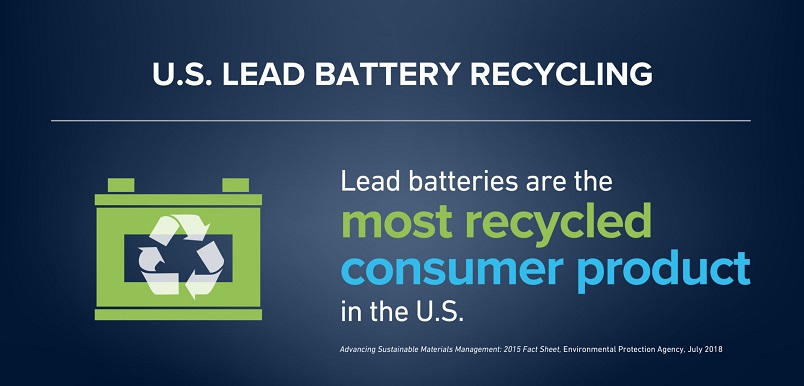
Recycling Helps Curb Pandemic Shortages
The global pandemic has certainly proven the important connection between recyclables, essential products and packaging. For example, in March, as states and communities imposed restrictions to prevent the spread of coronavirus, U.S. manufacturers mobilized. They needed to ensure they’d have access to the feedstock needed to make their products.
The grocery and medical industries experienced shortages first-hand. The demand for more shipping boxes quickly became apparent, and paper companies sought more recycled cardboard and paper feedstock for making new packages to fill the manufacturing gaps in supply chains.
Recycling Helps Preserve the Environment
For sure, COVID-19 has kept people closer to home. That’s led many of us to clear out our clutter. According to Waste Management, the largest recycler in North America, they’ve seen an increase of 25% in recycling since the peak of pandemic closures in April.
Furthermore, as the world’s population grows and becomes more affluent, we also create more waste. That exacerbates the burden of what to do with it. Recycling provides a critical path to help responsibly reduce the waste and preserve the environment.
Recycling Industries are Essential Industries
Thankfully, recycling industries are deemed essential industries in times of national emergency. They support the entire manufacturing sector with valuable material feedstocks. Earlier this year, the Institute of Scrap Recycling Industries noted that recycling is the first link in the U.S. manufacturing supply chain, providing an average of 40% across all commodities, of the country’s raw material needs.
Circular Economy of Lead Batteries Ensures Steady Supply Chain
In the lead battery industry, our circular economy and high recycling rate have made supply chain disruption a virtual non-issue. Nearly all the feedstock for new batteries comes from recycled materials. Consider these facts:
- Each new battery typically is comprised of 80% recycled material.
- 73% of U.S. lead demand is met by U.S. lead battery recycling.
- Our industry recycles 130 million lead batteries annually, keeping them out of landfills.
Want to Learn More? Attend EPA’s Virtual Innovation Fair
If you’d like to learn more about America Recycles Day, we invite you to visit our virtual booth at the EPA’s 2020 America Recycles: Innovation Fair from 1–5 p.m. (EDT) on Monday, Nov. 16. It’s free and open to the public.

The fair will showcase recent advances in recycling technology, product development, and materials usage. Along with other exhibitors, we’ll be available for a live chat to answer your recycling questions. We’re always happy to share the sustainable and environmental success of the lead battery manufacturing and recycling industry!

